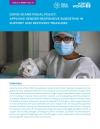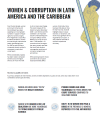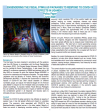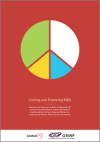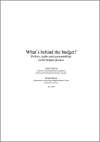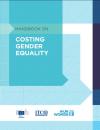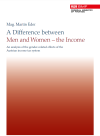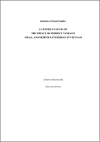Since the start of the COVID-19 pandemic, almost USD 16 trillion has been pumped into the global economy, and governments are now rolling out second and third ph
FOUND 27
The recent release of the Global Corruption Barometer (GCB) – Latin America and the Caribbean is an important step for understanding how corruption affects women.
This brief paper has been prepared in accordance with the guidance note from UN Women in consultation with the Equal Opportunities Commission (EOC), Civil Society Budget Advocacy Group (CSBAG) and the
Examining the resources needed to implement Security Council Resolution 1325 at national level as well as the gains, gaps and glitches of financing the women peace and security agenda. Over the last decade the policy environment on women, peace and security has gained significant momentum.
Paper discussing the definition and measurement of Sustainable Development Goal (SDG) Indicator 5.c.1. (reclassified to Tier II) and comparing Indicator 5.c.1 with other SDG fiscal indicators.
Using country-level data, the paper estimates the costs of interventions aimed at promoting gender equality and women's empowerment in Bangladesh, Cambodia, Ghana, Tanzania, and Uganda. It then uses these estimates to calculate the costs of such interventions in other low-income countries.
The Handbook is a comprehensive, step-by-step guide to costing gender equality priorities.
Study by the Austrian Federal Ministry of Finance discussing existing income discrepancies based on current statistics and examining the effects of taxation, which is gender-neutral in its legal formulation, on these differences, especially with regard to the most recent tax reform.
This paper on SMEs in Vietnam, looks into biases that help explain the higher costs and lower profits of female-owned enterprises. It brings together gender analysis, small scale enterprise analysis, and gender budget analysis in a development context by demonstrating that gender mat
